Journal of the
SOCIETY FOR
INFORMATION
DISPLAY
A preview of the papers appearing in the November 2006 issue of theJournal of the SID. To obtain access to these articles on-line, please go to www.sid.org
Edited by Aris Silzars
High-accuracy system for spectral measurement of small-area-contrast and low-light-level display screens
Irshaad Fatadin
Christine Wall
Ken Vassie
National Physical Laboratory, U.K.
Abstract — A double-monochromator spectroradiometer with a photon-counting detector will be described. The system captures spectroradiometric data with near-perfect linearity over six decades of intensity and with wavelength uncertainties of under 0.05 nm. It enables accurate measurement of spectral radiance data and small-area contrast with an uncertainty less than 0.002 in chromaticity (x, y) and 2% in luminance for a typical CRT spectrum.
To evaluate the performance of the system, measurements were performed using the new photon-counting system and a fully calibrated commercial diode-array spectroradiometer. Both a CRT and LCD were measured and compared. Figure 6 shows an example of the measurement of an LCD for a white screen. Good correlation between the data was obtained. However, because of the increased detector sensitivity, the photon-counting system can use a much narrower bandwidth (1 nm in this case), resulting in finer wavelength resolution, thus resolving some double emission peaks that are not explicitly defined with the diode-array spectroradiometer. The good linearity of the system allows for the measurement of small-area high-contrast images.
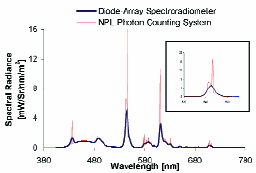
FIGURE 6 — Comparison of the National Physical Laboratory photon- counting system to a commercial diode-array spectroradiometer when measuring a white LCD screen. The inset shows the double peak around 550 nm clearly resolved with the photon-counting system.
Spectral characterization and color correction of display colorimeters
Réjean Baribeau
National Research CouncilCanada, Canada
Abstract — Tristimulus colorimeters commit systematic errors due to their imperfect realization of the CIE color-matching functions. A method is proposed to characterize display colorimeters in a single session using a monochromator independently of any display. Colorimeter spectral responsivity functions are obtained that then serve to predict correction matrices for all the possible displays. Experiments show that this can be done with sufficient accuracy to meet practical requirements.
Figure 2 shows how spectral radiance can vary across a 40 ´ 40-mm light field created on the LSD, as measured perpendicular to it. Radiance also decreases when moving away from normal to the diffuser. These lateral and angular variations are found to be fairly inde-pendent of wavelength. When measuring the monochromator target field with the colorimeters and with the spectroradiometer, we stayed within a few degrees from normal to the light-shaping diffuser, centered on the target area, and with approximately the same viewing field.
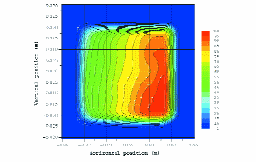
FIGURE 2 — Isocontours of the luminance distribution across the light-shaping diffuser at the exit of the monochromator, as measured perpendicular to it with a colorimetric imaging camera.
Color measurement methods for medical displays
Anindita Saha
Hongye Liang
Aldo Badano
Food and Drug Administration, U.S.A.
Abstract — The effect of different measurement methods on the characterization of display color, maximum color difference, and luminance uniformity of medical liquid-crystal displays are reported. A telescopic colorimeter and a custom-designed collimated probe with an internal lens attached to a spectrometer was used. The maximum color-difference variations were found to be between 0.0047 and 0.0073, in the same range as variations among methods, displays, and screen locations.
The first probe design was based on collimation. This probe design allowed too little light to pass to the spectrometer causing erroneous measurements. Thus, a new probe was designed by widening the tip of the probe to approximately 2 cm to increase the light input. The modification can be seen schematically in Fig. 1(b). All measurements were performed with the tip of the probe being 1 mm from the display screen.

FIGURE 1 — Design modification to use a luminance probe for spectral measurements. The color probe has a larger aperture and no internal baffles to allow more light into the fiber.
Taking on motion-artifacts evaluation in the VESA FPDM
Joe Miseli
Sun Microsystems, U.S.A.
Abstract — To date, there are no well-established and few valid candidate methods to evaluate motion artifacts, although a number of organizations are working to come to agreement on ways to characterize, analyze, and quantify them. The LCD-TV market has vested interest to improve performance with regard to motion artifacts, since (1) LCDs are quite susceptible to many types of motion distortions, (2) most of its primary content has motion, and (3) they can be very noticeable and objectionable to even a casual viewer. An overview of motion artifacts and the work of the VESA FPDM (Flat Panel Display Measurements Standard) group, both to update FPDM to FPDM3 and to standardize methods to evaluate motion artifacts, is provided.
For very-slow-response-time displays, such as early STN-LCDs, the most obvious motion distortion seen might be cursor tails smeared across the display. For LCD TVs, the most noticeable item might be motion blur from rapidly changing video content. For LCD monitors, it might be wireframe flickering which could occur from slow-moving or high-spatial-frequency content or from CAD applications moving wireframe models. Or dynamic chromatic aberrations, geometricdistortions, dynamic contour generation, etc., can be seen from moving video content. Figure 1 shows two examples of different motion artifacts.
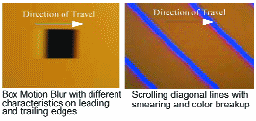
FIGURE 1 — Examples of motion artifacts.
Display reflectance: Basics, measurement, and rating
Michael E. Becker
Display-Metrology & Systems,Germany
Abstract — Methods and instruments for measurement and evaluation of reflection characteristics are reviewed as needed for research and development of electronic displays and for material and surface modeling with ray-tracing and rendering software packages. Contrast under ambient illumination and recognizability under daylight illumination are prime development targets in the electronic-display field, while computation and synthesis of realistic scenes and objects are pushing the need for physical data in computer-graphics applications. Three categories of instruments are available for detailed reflection analysis. They are based on (1) gonioscopic (mechanical) and conoscopic (optical) directional scanning, (2) imaging approaches, and (3) on arrangements with variable source or receiver aperture. The capabilities, advantages, and limitations of these methods are introduced and discussed in order to facilitate appropriate selection of methods and instruments. For illustration purposes, typical results obtained from commercial electronic display screens are presented. A basis for continued widespread implementation and standardization of reflection metrology as required for objective rating and comparison of electronic-display screen performance under ambient illumination is provided.

FIGURE 23 — (a) Beam geometry for a variety of specular reflection components from different interfaces of the multilayer stack, collimated beam illumination. (b) Beam geometry for two specular reflection components from two interfaces of the multilayer stack, point-source illumination. (c) Beam geometry for a variety of specular reflection components from the same interface of the multilayer stack with point-source illumination.
Measurement of light incident on mobile displays in various environments
Satoru Kubota
Sou Okada
Eiji Sakai
Takayuki Fujioka
Seikei University, Japan
Abstract — By using a single-lens digital camera with an attached 180° fisheye lens, the incident light at the surface of a mobile display in 112 different environments, including outdoor and indoor environments and inside an automobile, were measured. The data were analyzed for some typical environments in which mobile displays are used. The results of this research can be used in the design of reflective and transflective LCDs, making maximum use of ambient light.
Figure 1 shows a method of capturing ambient light from a mobile display and the 180° visual field image that was created. An image of the user's face was taken from the position of the display. The distance from the lens to the user's face was set to 40 cm after considering the visual distance of the display, and the lens was angled at 45° from the horizontal. The determination of this angle was based upon the angle at which six test subjects in a pilot study used a mobile phone while indoors. An illuminance meter was used to measure the illuminance on the lens surface.

FIGURE 1 — Left side: Capturing ambient light from the mobile display. Right side: A full spherical image seen by a mobile display.
Display daylight ambient contrast measurement methods and daylight readability
Edward F. Kelley
Max Lindfors
John Penczek
NIST, U.S.A.
Abstract — Two composite metrics to characterize display reflection, contrast, and readability under daylight illumination is proposed. A measurement of the reflection under directed illumination simulating the sun is combined with a measurement of the reflection under uniform diffuse illumination to simulate the sky. The measurements are performed separately in a laboratory, and then the measurement results are combined and scaled to daylight levels with attention to the proper spectra involved for the skylight and sunlight.
High demand exists for daylight-readable displays. At present, the term "sunlight readable" is ill-defined but commonly used. Often the display is placed outdoors in bright sunlight with the surrounding skylight to see whether it can be read easily. This is not objectionable, but it is not very reproducible. However, to simply point a spotlight with a sun-level illuminance at a display where the spotlight is placed at a substantial angle from the normal is
not representative of daylight conditions. Such an arrangement neglects the contribution from a diffuse surround.
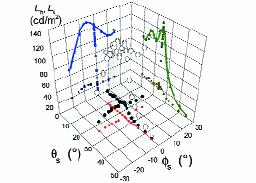
FIGURE 10 — Luminance for the optimal sun configuration of a transflective cell-phone display in its reflective mode in the vicinity of maximum readability. The plot shows the luminances of white and black under directed illumination.
High-transmittance in-plane-switching liquid-crystal displays using a positive-dielectric-anisotropy liquid crystal
Zhibing Ge
Xinyu Zhu
Thomas X. Wu
Shin-Tson Wu
University of Central Florida, U.S.A.
Abstract — The in-plane-switching (IPS) mode exhibits an inherently wide viewing angle and has been widely used for liquid-crystal-display (LCD) TVs. However, its transmittance is limited to ~76% compared to that of a twisted-nematic (TN) cell if a positive-dielectric-anisotropy LC is employed. A special electrode configuration that fuses the switching mechanism of the conventional IPS and the fringe-field switching (FFS) to boost the transmittance to ~90% using a positive LC has been developed. The new mode exhibits an equally wide viewing angle as the IPS and FFS modes.
Two new electrode designs to improve the transmittance of conventional IPS LCD panels were demonstrated. In the high-transmittance IPS (HT-IPS) mode, using a positive Δε LC, the electrode width and gap are intentionally kept equal to or larger than 3 μm for the consideration of high-yield manufacturing. The switching mechanism and performance, such as voltage-dependent transmittance, iso-brightness, iso-contrast, and response time of the HT-IPS, are investigated and the results are compared to those of the IPS and FFS modes.
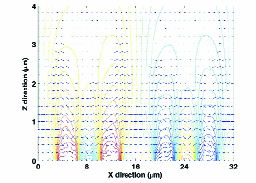
FIGURE 1 — Director profiles with equal potential lines of the HT-IPS-2 cell using a positive Δε LC material.
Heterodyne method for determining the surface tilt angle of nematic liquid-crystal displays
Shug June Hwang
Min Hua Hsu
National United University, Taiwan
Abstract — The high-sensitivity pretilt-angle measurement of liquid-crystal displays, based on the modified crystal-rotation configuration and the use of a common-path heterodyne interferometer, is proposed. In this technique, environmental disturbance and surface reflection are eliminated to a large extend, thus providing advantages for both constructing a simple-optics measurement system and achieving fast measurement with high accuracy and sensitivity.
Because the optical heterodyne method can perform a rapid measurement with high sensitivity, a common-path optical heterodyne interferometer was utilized to probe the phase difference of the birefringence LC cell in real time. The experimental setup for measuring the optical retardation and pretilt angle of a LC cell is demonstrated in Fig. 2. A differential phase detection scheme associated with a common-path optical heterodyne interferometer was designed to measure the rotation angle-dependent phase retardation of the LC cell in this system.

FIGURE 2 — Schematic diagram of phase-retardation evaluation system to probe the pretilt angle: ZL, Zeeman Laser; QWP, quarter-wave plate; BS, beam splitter; LP1,2, polarizers; PD1,2, photodetectors.
LED backlight system with double-prism pattern
Akihiro Funamoto
Shigeru Aoyama
Omron Corp., Japan
Abstract — An LED backlight system with a double-prism pattern for use in mobile phones to achieve thin and high-luminance LED backlight systems is proposed. The double-prism pattern is formed on the light guide of the proposed LED backlight system and simultaneously exhibited two optical functions: shifting of the light from the direction of the guided light toward the radiated light and controlling the directivity of the radiated light. Therefore, using the double-prism pattern eliminates two prism sheets and a diffusive sheet, which are indispensable optical elements to exhibit the optical function that controls the directivity of light in conventional LED backlight systems. Consequently, the thickness of the proposed LED backlight system is reduced to 0.75 mm compared to that of the conventional system. A luminance of 3115 nits and a full-width half maximum of 35° for radiated light, which are comparable to conventional LED backlight systems, were obtained.

FIGURE 3 — Schematic illustration and light paths of an LED backlight system with a double-prism pattern.
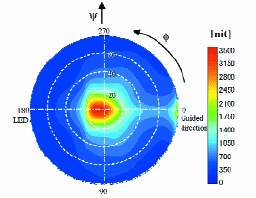
FIGURE 13 — Luminance distribution of a fabricated LED backlight system.
Threshold-voltage recovery of a-Si:H digital circuits
Sameer M. Venugopal
David R. Allee
Zi Li
Lawrence T. Clark
Arizona State University, U.S.A.
Abstract — a-Si:H thin-film transistors demonstrate threshold voltage recovery of several volts after room-temperature rest with no applied voltage. The extent to which this phenomenon can be used to extend the operational lifetime of a-Si:H digital circuits is examined and is shown to be strictly limited.
In order to determine the effects of the threshold voltage recovery on digital circuits, inverters and 10 transistor latch circuits have been fabricated with a low-temperature a-Si:H process. They were stressed with a 50%-duty-cycle input and rested at room temperature without any applied voltage. Substantial recovery of the threshold voltages was observed. However, subsequent electrical stress rapidly degraded the threshold voltage to the pre-rest value. Hence, the threshold-voltage recovery observed in a-Si:H circuits after periods of rest is temporary and cannot be used to extend the total operational circuit lifetime.

FIGURE 3 — Micrograph of (a) a-Si:H inverter and (b) a-Si:H latch.